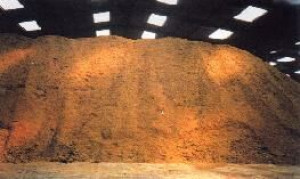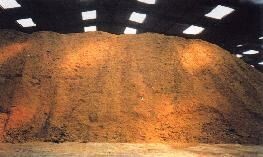A 34,000-tonne inventory of bone meal under a hangar awaiting destruction began to heat. A passerby noticed a glow and notified the site watchman. A response covering a few m² with a powder extinguisher halted the phenomenon. The characteristics of this stock (16 to 18 m high vs. the 8-to-12 m guideline, with the added mass of sub-layers altering the temperature map, creating a dust explosion risk, etc.) complicated the emergency intervention. An expert was commissioned. Continuous measurements showed hotspots (up to 150°C). Cooling by means of dry ice was attempted but quickly renounced due to its inherent lack of effectiveness and CO2 release. The favoured option then became the spreading of thin layers approx. 50 cm thick. Covering the pile allowed interrupting the exothermic reaction (by restricting air intake) and lowering overall temperature. A proportion of the hangar stock was transferred, once the temperature had been cooled to below 35°C, to the neighbouring hangar whose height was limited to 8 metres. The cooling and building-to-building transfer operations were conducted between July and December 1999. Air samples extracted within a 500-m radius revealed that the incident had not generated any significant pollution. The removal of bone meal from storage took several months since it depended on the incineration capacities at either the cement works or a specialised centre. The inventory was completely cleared by the end of 2001 through shipping to cement works in foreign countries for use as fuel.
Download the detailed report in .pdf format (51 Kb)





